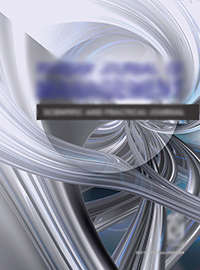The morphological changes in the brain tissue of Wistar rats of different ages after intramuscular insulin injection in the dose of 1 IU/kg are typical for the hypoxic lesions of nervous tissue. The brain of rats at the age of 1-2 months responds to increased deposition of glycogen, moderate swelling around the cells and blood vessels. The effect of insulin on the brain Mature rats at the age of 5-7 months leads to vasodilatation, more pronounced swelling around the cells and blood vessels, hypertrophy of cells, aggregation and diabetes of red blood cells. The severity of ischemic changes significantly increased in the brain of old rats at the age of 20-24 months. These old rats had the senile dendrites, the widespread hypertrophic degenerative changes, i.e. flask-shaped vasodilation, hyperemia. In most of the visual fields are detected capillaries with the presence of aggregation on the side erythrocytes, signs of micro thrombosis, hemorrhage areas. The authors note that there is a loss of tone and tortuosity of the small arterioles, widespread swelling around the cells and around the blood vessels. Morphological signs of brain reaction on insulin injection reflect the death of cortical neurons, marked swelling of the brain tissue, disruption of vascular permeability, the thrombus formation and hemorrhages.
morphological changes in the brain of Wistar rats, insulin, brain ischemia.
1. Bagdasaryan N.A., Khostikyan N.G., Alikhanyan K.B., Meliksetyan V.S., Bagdasaryan M.G., Stepa-nyan A.G., Kukhtarova A.M., Mirzoyan N.R. Morfologicheskie izmeneniya tkaney golovnogo mozga krys v usloviyakh lokal´noy permanentnoy ishemii pod vozdeystviem gemisuktsinata 2-metil-6-etil-3-gidroksipiridina. Eksperimental´naya i klinicheskaya farmakologiya. 2014. T. 77. № 12. S. 10-13.
2. Gromakova I.A., Konovalenko O.A. Lizosomal´nyy proteoliz: vliyanie vozrasta i insulina. Biokhimiya. 2003. T. 68. № 7. S. 946-950.
3. Ivannikova N.O. Dinamika povedencheskikh i morfofunktsional´nykh izmeneniy u krys s eks-perimental´nym vnutrimozgovym krovoizliyaniem posle emotsional´noy stressornoy nagruzki: avtore-ferat dis.... kand. med. nauk. Moskva, 2012.
4. Kvitnitskiy-Ryzhov Yu.N. Sovremennoe uchenie ob oteke i nabukhanii golovnogo mozga. Kiev, 1988. 211 s.
5. Makisheva R.T. Sakharnyy diabet razvivaetsya kak adaptatsiya k izbytochnomu vozdeystviyu insu-lina. Materіali naukovo-praktichnoї Іnternet-konferentsії z mіzhnarodnoyu uchastyu. Tsukroviy dіabet - mіzhdistsiplіnarna problema suchasnoї meditsini. Chernіvtsі: Medunіversitet, 2013. 26 s.
6. Makisheva R.T. Fiziologiya sakharnogo diabeta. Astana: ENU, 2007. 128 s.
7. Makisheva R.T. Prisposobitel´noe povedenie belykh krys s ekzogennoy giperinsulinemiey na fone immobilizatsionnogo stressa, pishchevoy i vodnoy deprivatsii: avtoreferat dis.... kand. med. nauk. Moskva, 1997.
8. Mkrtumyan A.M., Biryukova E.V., Markina N.V. Vybor rezhima insulinoterapii pri sakharnom diabete 2 tipa. Lechashchiy vrach. 2005. N 5. S. 22-25.
9. Salmina A.B., Yauzina N.A., Kuvacheva N.V., Petrova M.M., Taranushenko T.E., Malinovskaya N.A., Lopatina O.L., Morgun A.V., Pozhilenkova E.A., Okuneva O.S., Morozova G.A., Prokopenko S.V. Insulin i insulinorezistentnost´: novye molekuly-markery i molekuly-misheni dlya diagnostiki i terapii zabolevaniy tsentral´noy nervnoy sistemy. Byulleten´ sibirskoy meditsiny. 2013. T. 12. № 5. S. 104-118.
10. Sergeev P.V., Shimanovskiy N.L. Retseptory fiziologicheski aktivnykh veshchestv. M.: Meditsina, 1987. 400 s.
11. Shishkova V., Osychenko M. Profilaktika metabolicheskikh i kognitivnykh narusheniy pri ozhirenii i sakharnom diabete tipa 2 . Vrach. 2011. № 2. S. 31-34.
12. Bornstein N.M., Korczyn Amos, Brainin M., Guekht A., Skoog I. Diabet i mozg: voprosy i nereshennye problemy. Effektivnaya farmakoterapiya. 2014. № 39. S. 50-59.
13. Insulin and glucagon share the same mechanism of neuroprotection in diabetic rats: role of glutamate / Fanne R.A., Nassar T., Heyman S.N. [et al.]. Am. J. Physiol. Regul. Integr. Comp. Physiol. 2011. V. 301. № 3. R. 668-673
14. Korsatko S., Deller S., Mader J.K., Glettler K., Koehler G., Treiber G., Urschitz M., Wolf M., Hastrup H., Søndergaard F., Haahr H., Pieber T.R. Ultra-Long Pharmacokinetic Properties of Insulin Degludec are Com-parable in Elderly Subjects and Younger Adults with Type 1 Diabetes Mellitus. Drugs Aging. 2013. V. 31, №6. P. 47-53.
15. Pagotto U. Where does insulin resistance start? The brain. Diabetes Care. 2009. V. 32, № 2. R. 174-177.
16. Effect of parenteral insulin application on survival, humoral and cellular immune response and hemopoiesis of “young” and “old” healthy mice / Poljak-Blazi M., Cetkovic-Cerlje M., Hadzya M. [et al.]. Diabetol. Croat.1992. V. 21, №3-4. C. 69-73.
17. Insulin resistance and risk of ischemic stroke among nondiabetic individuals from the northern Man-hattan study / Rundek T., Gardener H., Xu Q. [et al.] . Arch. Neurol. 2010. V. 67, № 10. P. 1195-1200.
18. Schneider J.A., Bennett D.A. Where vascular meets neurodegenerative disease. Stroke. 2010. Vol. 41, Suppl. 10. P. 144-146.





